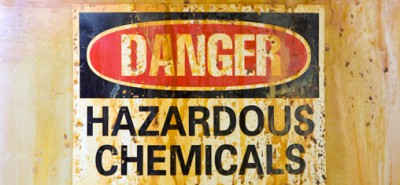The Tianjin Explosions in Retrospect: More Than One Chemical Explosion in China This Year

About a week ago, on a late Wednesday night, a sight of almost Armageddon proportions confronted the residents of Tianjin. Whether they witnessed the red and orange blaze shooting up to the sky from their apartment windows; or whether they slept through it only to be confronted by a smoky black sky in the morning, the citizens of Tianjin have seen part of their city turned into something resembling a “war zone.”
By now, the story has travelled internationally: double explosions at a chemical storage plant – the first equivalent to detonating three tonnes of TNT, and the second equivalent to 20 tonnes – rocked the port, blasting windows out of their frames and flattening rows upon rows of shipping containers.

From the various amateur videos floating around, the reactions behind the camera go from sounds of complete awe, to utter shock and fear. So explosive was the blast it was seen from space and registered as seismic activity in China. The current and on-going toll is 114 dead and 70 missing.

The trigger for the explosion is still unknown. What is known, however, is that the Ruihai Logistics Company warehouse in the Tianjin Binhai New Area, an industrial base located along the coast of the Bohai Sea, was storing a number of highly hazardous and highly reactive chemicals, including hundreds of tonnes of sodium cyanide. According to the Tianjin Tanggu Environmental Monitoring Station, hazardous chemicals stored by the company concerned include sodium cyanide (NaCN), toluene diisocyanate (TDI) and calcium carbide (CaC2), all of which pose direct threats to human health on contact. NaCN in particular is highly toxic; and CaC2 and TDI react violently with water and reactive chemicals, with risk of explosion.
On Friday August 14, Greenpeace East Asia sent out a rapid response field team to bear witness to what is becoming an environmental and human tragedy. At four test sites located within 9 km from the main centre, we checked for the presence of sodium cyanide or cyanide in bodies of water around the blast site. High levels were not detected. However, they do not prove or disprove the presence of low levels of cyanide in Tianjin’s water compared to normal surface water concentration; nor the presence of other hazardous chemicals in the water. In fact, an evacuation zone of 3 km is ‘de facto’ in place over fears of chemical contamination and a change in wind direction.

But whilst the Tianjin blast is definitely severe, it is not China’s only case. What we have witnessed over the last few days is just the tip of the iceberg. Just this year thirteen other explosions have occurred in the provinces of Jiangsu, Fujian and Shandong according to media reports. In fact, as recent as last month an explosion hit a chemical plant in the eastern Chinese city of Nanjingspreading to three other chemical tanks nearby. What lies beneath the surface is years of negligence in regards to hazardous chemicals policies and their implementation.
Right now the residents of Tianjin’s port area are in a state of shock – the scene around them dominated by shattered windows, skeleton-like cars and an area covered in nothing but rubble and ash. In addition, many have had to stay in temporary homes and shelters, left with no resource but to cry and demand to know where the bodies of their loved ones are.

Over the years Greenpeace has campaigned for a toxic-free future. Whether it’s chemicals spilling in to our rivers from textile factories; or non-recyclable electronic products creating mountains of e-waste, the severity of the Tianjin explosion should be a wake-up call for the government in China and around the world. Loopholes must be closed, and regulations must be implemented strictly and effectively. If not, we will continue to see these kinds of dangerous accidents polluting our water, poisoning our air and ruining our cities.
Yixiu Wu, Toxics Campaigner for Greenpeace East Asia.

